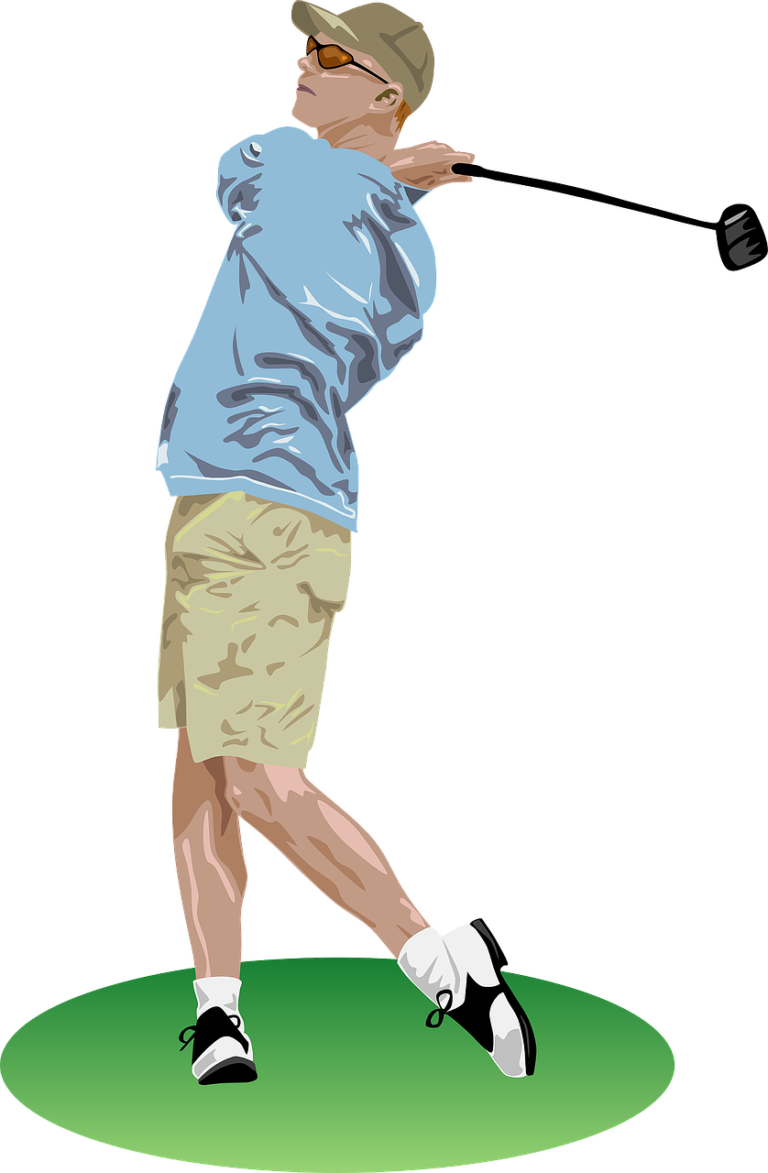What Is an Eagle in Golf
If you are a golf fan, you probably know that scoring an eagle is one of the most satisfying and exciting achievements in the game. But what exactly is an eagle in golf, and how do you score one?
In this article, we will answer these questions and more, as we explore the meaning, history, and tips of scoring an eagle in golf.
What Is an Eagle in Golf?

An eagle is a golfing term for a score on a golf hole that is two under its given par (the score that a scratch golfer would be expected to record on that hole). For example, if you score a 3 on a par-5 hole, you have made an eagle.
Similarly, if you score a 2 on a par-4 hole or a 1 on a par-3 hole, you have also made an eagle.
The term “eagle” is derived from the word “birdie”, which means a score of one under par on a hole. The origin of the word “birdie” dates back to the early 20th century in the USA, when the slang term “bird” was used to describe something good.
The first recorded use of the term “birdie” in golf was in 1903 at the Atlantic City Country Club in New Jersey. After that, the use of “eagle” was a natural progression to describe a score of one better than a birdie. The term “eagle” was initially used only in the USA, but it became popular in Britain and other countries by the early 1920s.
Scoring an eagle is not very common in golf, even for professional golfers. According to the PGA Tour statistics, the average number of eagles per round for the top 10 players in the 2020-2021 season was 0.18, which means they made an eagle once every five or six rounds.
For amateur golfers, scoring an eagle is even more rare and memorable.
How to Score an Eagle in Golf
There are different ways to score an eagle in golf, depending on the par and length of the hole. Here are some tips and strategies for each scenario:
Eagle on a Par-3 Hole
An eagle on a par-3 hole is also known as a hole-in-one or an ace. It is the rarest and most coveted type of eagle in golf, as it requires hitting the ball directly into the hole from the tee box.
The odds of making a hole-in-one vary depending on the skill level of the golfer and the difficulty of the hole, but they are generally estimated to be around 1 in 12,000 for an average golfer and 1 in 2,500 for a professional golfer.
To increase your chances of making a hole-in-one, you need to choose the right club, aim at the center of the green, swing smoothly and confidently, and hope for some luck. You also need to consider factors such as wind direction, elevation change, slope, and pin position.
Some holes are more conducive to holes-in-one than others, such as those with large or flat greens or those with slopes or bunkers that funnel the ball towards the hole.
Some examples of famous holes-in-one include Tiger Woods’ ace at the 16th hole of the 1997 Phoenix Open, which caused a massive roar from the crowd; Jack Nicklaus’ ace at the 16th hole of the 1986 Masters, which helped him win his sixth green jacket at age 46; and Jon Rahm’s ace at the 16th hole of the 2020 Masters practice round, which bounced off the water and rolled into the hole.
Eagle on a Par-4 Hole
An eagle on a par-4 hole is also known as an albatross or a double eagle. It is slightly more common than a hole-in-one, but still very rare and impressive. It can be achieved by either driving the green and making a putt, or holing out an approach shot from the fairway.
To score an eagle on a par-4 hole, you need to have a combination of power, accuracy, and skill. You also need to pick the right hole to attempt it, as not all par-4s are reachable from the tee.
You need to look for holes that are short enough (usually less than 300 yards), straight enough (without too many doglegs or hazards), and wide enough (with enough room for error) to allow you to go for the green with your driver or fairway wood. You also need to factor in elements such as wind speed, tee height, ball flight, and landing area.
Some examples of famous eagles on par-4 holes include Phil Mickelson’s drive-and-putt at the 10th hole of the 2013 Waste Management Phoenix Open, which clinched his wire-to-wire victory; Rory McIlroy’s hole-out from 164 yards at the 14th hole of the 2018 BMW PGA Championship, which sparked his comeback win; and Dustin Johnson’s drive-and-putt at the 18th hole of the 2020 Northern Trust, which forced a playoff with Jon Rahm.
Eagle on a Par-5 Hole
An eagle on a par-5 hole is the most common and achievable type of eagle in golf, especially for long hitters who can reach the green in two shots. It can also be scored by holing out a chip, pitch, or full shot from around the green.
To score an eagle on a par-5 hole, you need to have a good strategy, execution, and touch. You need to plan your shots carefully, taking into account the distance, shape, and layout of the hole. You need to hit two solid shots to set up a putt or a short game shot for your third. You also need to have a good feel for the speed and break of the green, and putt or chip with confidence and precision.
Some examples of famous eagles on par-5 holes include Tiger Woods’ chip-in at the 15th hole of the 2005 Masters, which hung on the edge of the cup before dropping in; Sergio Garcia’s eagle putt at the 15th hole of the 2017 Masters, which helped him force a playoff with Justin Rose and eventually win his first major; and Jon Rahm’s eagle putt at the first playoff hole of the 2021 BMW Championship, which beat Dustin Johnson and secured his fifth PGA Tour title.
The Pros and Cons of Aiming for an Eagle in Golf
Scoring an eagle in golf can be a thrilling and rewarding experience, but it also comes with some benefits and challenges. Here are some of them:
Benefits
- Scoring an eagle can give you a huge boost in your scorecard, as it can help you gain two strokes on your competitors or make up for previous mistakes.
- Scoring an eagle can also give you a psychological edge, as it can boost your confidence, momentum, and morale, and put pressure on your opponents.
- Scoring an eagle can also be a source of pride, joy, and satisfaction, as it can showcase your skill, talent, and luck, and create a lasting memory.
Challenges
- Aiming for an eagle can also be risky, as it can expose you to more hazards, penalties, and mistakes. For example, trying to drive the green on a par-4 may result in hitting out of bounds, into water, or into trouble. Trying to reach the green in two on a par-5 may result in topping, slicing, or hooking your shot. Trying to make a long putt for an eagle may result in leaving yourself a difficult par save.
- Aiming for an eagle can also be stressful, as it can increase your expectations, pressure, and nerves. For example, you may feel more anxious or excited when you have a chance to make an eagle. You may also feel more disappointed or frustrated if you miss an eagle opportunity.
- Aiming for an eagle can also be distracting, as it can take your focus away from your game plan, process, and routine. For example, you may get too caught up in the outcome or result of your shot. You may also lose sight of the bigger picture or context of your round.
Conclusion

In conclusion, an eagle is one of the most coveted scores in golf, as it means finishing a hole in two strokes under par. It can be scored on any type of hole (par-3, par-4, or par-5), but it requires different skills and strategies for each scenario. Scoring an eagle can have positive and negative effects on your game, depending on how you approach it.
We hope this article has helped you understand what an eagle is in golf, how to score one, and what to consider when aiming for one. If you have any questions or comments about eagles in golf, please feel free to share them below.







